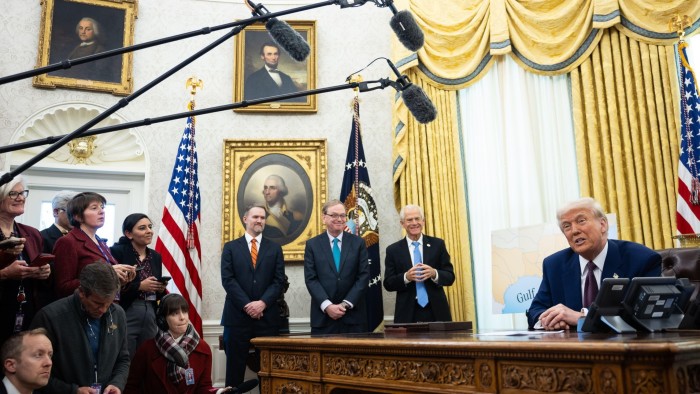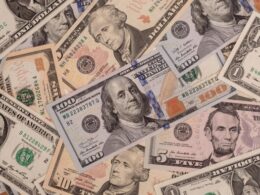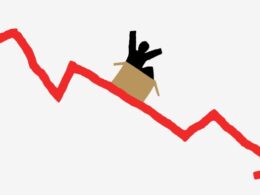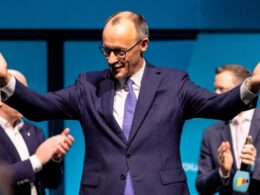Unlock the White House Watch newsletter for free
Your guide to what Trump’s second term means for Washington, business and the world
The weeks and months since Donald Trump took office — in fact since he was elected — have seen companies, foreign governments, commentators and the media play the somewhat frustrating game of Hunt The Rationale.
They have watched a dizzying carousel of tariffs being threatened and then delayed, or imposed and then lifted, or imposed only to be shot through with loopholes.
The most vivid example came on so-called “liberation day” on April 2, when a fresh round of tariffs was announced — only to be partially suspended a week later amid market turmoil.
Over time, the ranks of those claiming there’s a master plan have thinned — and their arguments have grown less persuasive. Increasingly it has become obvious that there is no plan, or at least no coherent plan with a single target and a way of hitting it. Instead, Trump’s tariff policy reflects a mixture of competing and often flat-out contradictory aims and a misunderstanding of the power of the crude instruments he is using.
More on The Future of Global Trade
All at once, he appears to be trying to cut trade deficits, protect US manufacturing, boost federal revenues, bring down other countries’ tariffs by offering deals, coerce them into a variety of actions (including allowing the US to annex Greenland or Canada), extract favours for granting exceptions to US companies, and keep the spotlight squarely on himself. The chaos surrounding his tariff policy is not just ineptitude — it is the result of huge contradictions.
Another factor leading to the chaos is the lack of consensus among his economics and trade officials, and the sense that none has the standing or the inclination to stand up to him.
During Trump’s first term, there were officials with relatively orthodox views such as Steven Mnuchin, who served as Treasury secretary, and Gary Cohn, who was director of the National Economic Council (NEC). Certainly, the trade warrior Peter Navarro, who was behind much of the planning for “liberation day”, was also in the administration then. But in practice quite a lot of influence was ceded to figures with more mainstream beliefs. Larry Kudlow, who succeeded Cohn at the NEC, persuaded Trump in 2018 to avert a trade showdown with the EU over car tariffs by securing instead a deal for Europe to buy more liquefied natural gas and soyabeans from the US and talk about a deal on industrial goods tariffs. (It never happened, but all-out trade war was averted.)
Trump also delegated heavily to US trade representative, Robert Lighthizer, who renegotiated the North American Free Trade Agreement (Nafta) to encourage reshoring of production to the US. Lighthizer is no one’s idea of an orthodox free-trader, but the result, the US-Mexico-Canada (USMCA) deal, was not radically different or more restrictive than Nafta. Similarly Lighthizer drove forward the so-called “phase one” deal with China, signed in 2020, in which some US tariff increases were averted in return for Chinese promises to buy US exports and to deregulate.
In this second administration, some relatively orthodox voices remain. Kevin Hassett, head of the National Economic Council, is a traditional free-trade Republican who also advised George W Bush and served in the more arm’s-length role of chair of the Council of Economic Advisers during Trump’s first term. Jamieson Greer, the US trade representative, is a protégé of Lighthizer and shares the same approach — coercive and protectionist, but at least making an effort to stay within the bounds of US law and conventional policymaking.
But it is the likes of Navarro who are closest to the president’s instincts. Other administration officials appear powerless to stand in his way unless circumstances dictate that Trump has to listen to them. Scott Bessent, the Treasury secretary, was billed as the voice of the financial markets when he was nominated, but the president has proved willing to risk a lot of market turmoil nonetheless. Even Bessent is a long way from being an orthodox free-marketeer: he has often talked about using gradual increases in tariffs as a coercive tool to distinguish friendly from unfriendly countries and punish them accordingly.

Stephen Miran, chair of the Council of Economic Advisers, came to attention by writing a paper echoing some of Bessent’s ideas and claiming that tariffs could be used to coerce other countries into a “Mar-a-Lago Accord” whereby they would agree to depreciate the US dollar and lend long-term to the US by buying long-dated US Treasuries. This argument got a lot of attention in the financial markets, but it is exceedingly hard to see how it would ever work.
For one, the Plaza Accord of 1985 from which the Mar-a-Lago version takes inspiration was accompanied by pledges of the necessary macroeconomic adjustment, with the US promising to tighten fiscal policy and weaken monetary policy to ease the dollar lower. By contrast, Trump is promising a massive tax cut. Second, given the Trump administration’s caprice on tariffs, there is no particular reason why any government should believe it will hold off imposing tariffs once the currencies have adjusted and the Treasuries have been bought.
Those looking for logic in Trump’s tariffs are likely to continue to be disappointed. His current attempts to sign trade deals with a range of countries to lift the threat of tariffs he imposed on April 2 will show whether partner governments believe there is sufficient continuity and logic there to trust that any agreement will be kept. Experience to date suggests there is not.
Trade Secrets
Alan Beattie writes the Trade Secrets newsletter. Premium subscribers can sign up here to get the newsletter delivered every Monday.
Source link









